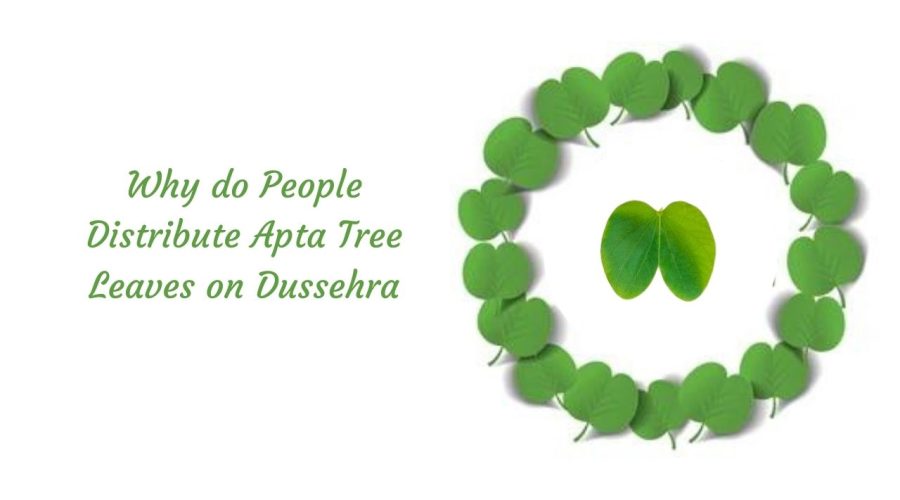Why do People Distribute Apta Tree Leaves on Dussehra and Vijayadasami day?
On Dussehra and Vijayadasami, people in the north and west of India distribute Apta, or Apati, tree leaves. Apta tree leaves are used to symbolise gold or sona in this rite. People wish a happy Dussehra by presenting Apta tree leaves to friends, families, and neighbours.
Why are Apati tree leaves offered during Dussehra is a fascinating tale?
Story of Distributing Apta Leaves
Kautsa, the young son of a Brahmin named Devdatt, was residing in Paithan. After completing his education from Rishi Varatantu, he insisted on his guru accepting Guru Dakshina.
However, Guru said, “Giving ‘Dakshina’ in exchange for obtaining knowledge is not right, Kautsa. The guru is glad when his student graduates, and this is the true Guru Dakshina.”
Kautsa was not content. He still felt obligated to do something for his guru. “Alright, if you insist on paying me Dakshina, then give me 140 million gold pieces, ten million for each of the 14 disciplines I have taught you,” the guru finally responded.
Kautsa went to Raghu, the king. Lord Rama’s ancestor Raghuraja was known for his benevolence. However, he had just spent all of his money on the Brahmins after executing the Vishvajit sacrifice. He requested three days’ notice from Kautsa. Raghuraja departed right away to get the gold money from Indra. Kuber, the god of riches, was called by Indra. “Make a downpour of gold coins fall on the “Shanu” and “Apati” trees that surround Raghuraja’s capital of Ayodhya,” Indra commanded Kuber.
The gold coins started to shower down. King Raghu entrusted all the money to Kautsa, who hurriedly presented them to Varatantu Rishi. Guru had only requested 140 million, so he returned the remainder to Kautsa. Kautsa had no desire for money. Honour was regarded as more precious than money at the time. He requested that the king return the remaining gold money. The king, however, refused to return them, since rulers do not return daans (gifts).
Finally, on Ashwin Shukla Dashami, Kautsa handed the gold coins to the inhabitants of Ayodhya. The ritual of stealing the leaves of the “Aapati” trees and presenting them to each other as “sone” is perpetuated in memory of this incident (gold).
Frequently Asked Questions
1. What is Apta tree?
This native Indian tree is scientifically called as Bauhinia racemosa. The tree is easily identified by its distinctive rough-textured twin leaves. In Maharashtra, these leaves are picked off the tree, exchanged like gold, and metaphorically plundered from each other on Dussehra day.
2. Which leaves are distributed on Dussehra?
On the Hindu festival of Dussehra, Maharashtrian households traditionally exchange Aapta tree leaves. The act of swapping gold denotes the plant’s special significance on that specific day.
3. Why do we give APTA leaves on Dussehra?
Victorious Maratha troops, according to mythology, would bring back gold and other war prizes. These items were then presented to God or offered to loved ones.
4. How do you plant an APTA tree?
Seeds or stem cuttings are used to propagate this plant. If seeds are used to propagate, they are steeped in water for 12 hours. Under full to moderate sunlight, this plant thrives. Mix vermicompost and coco peat into the soil at the time of planting.

